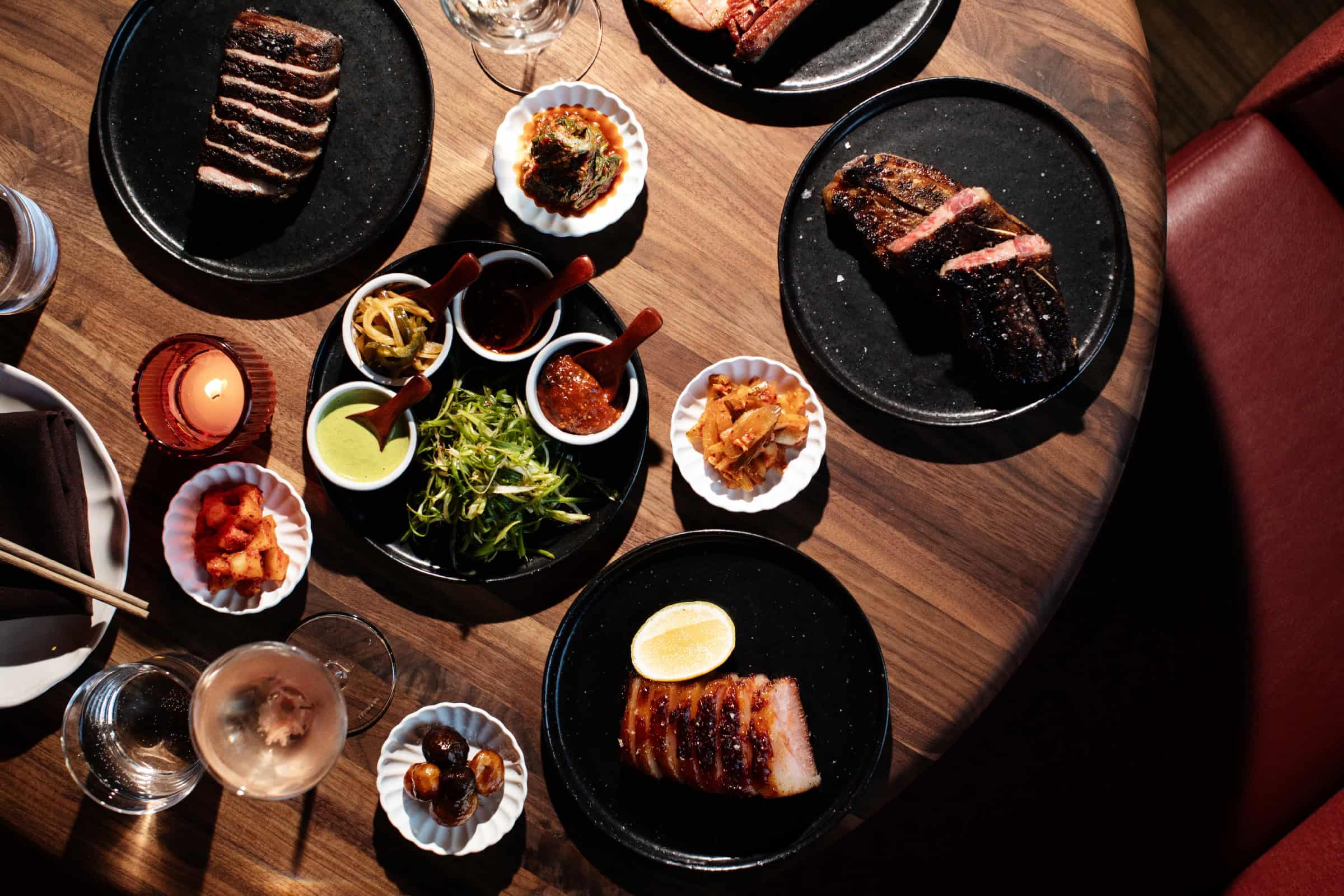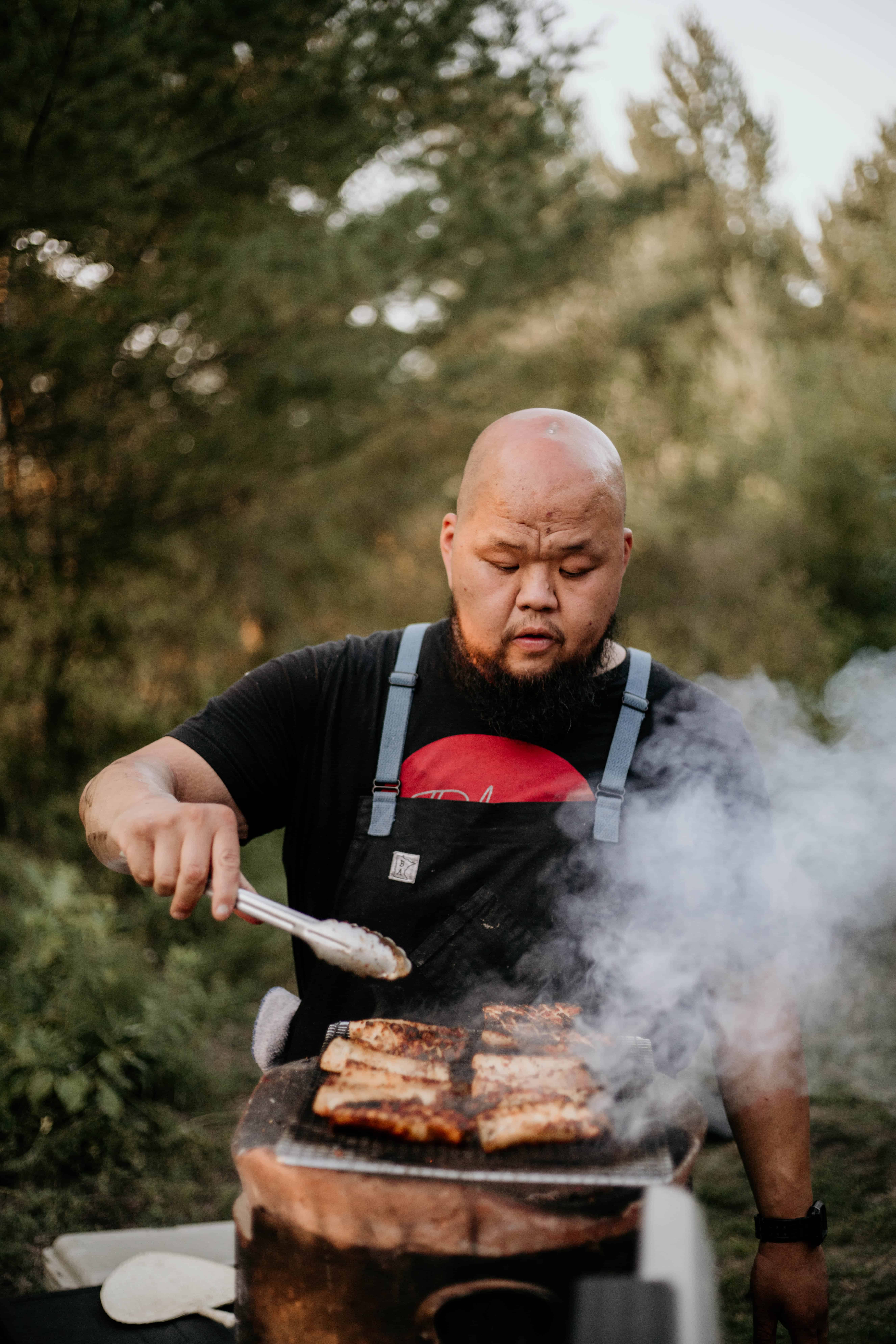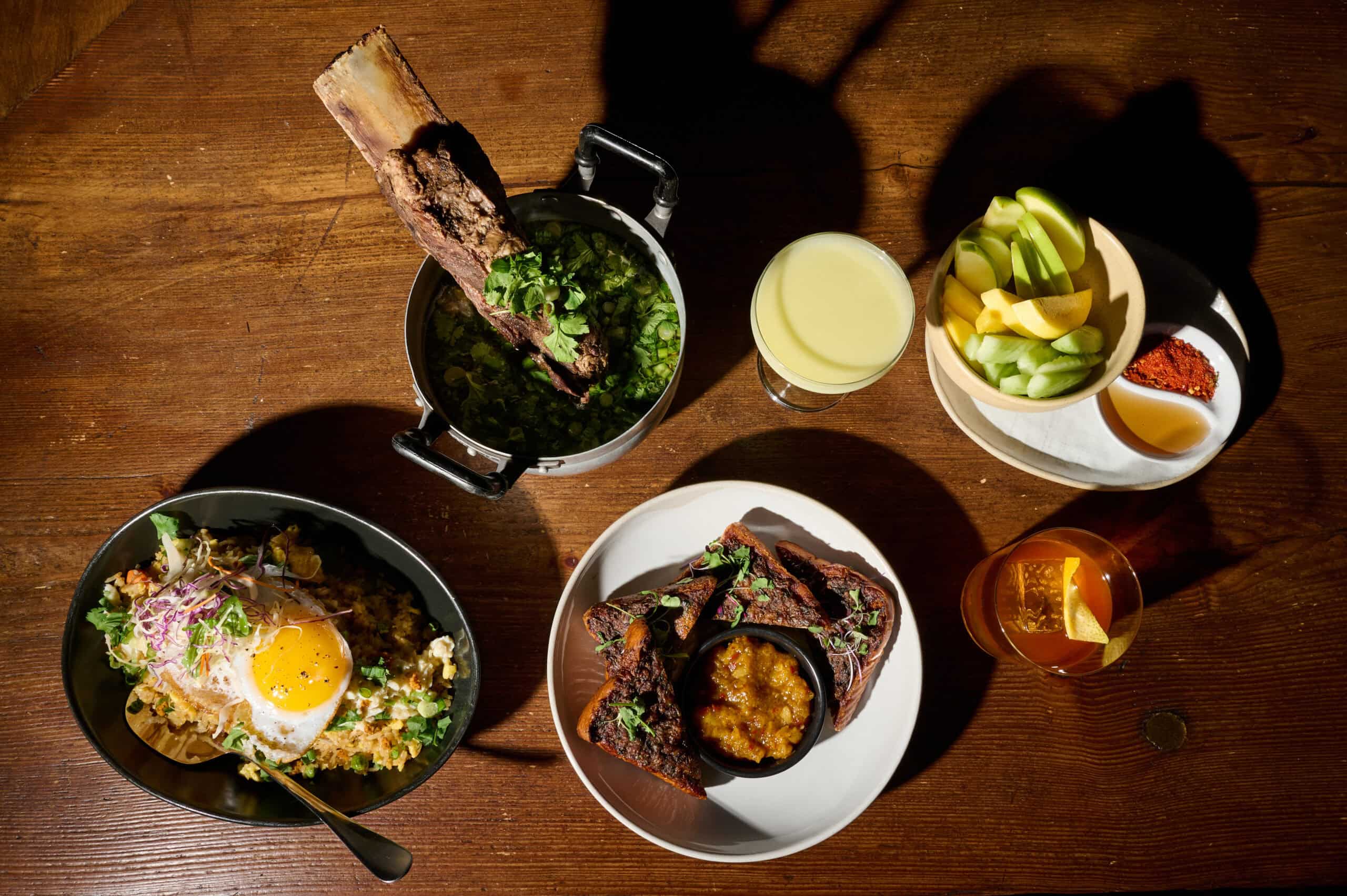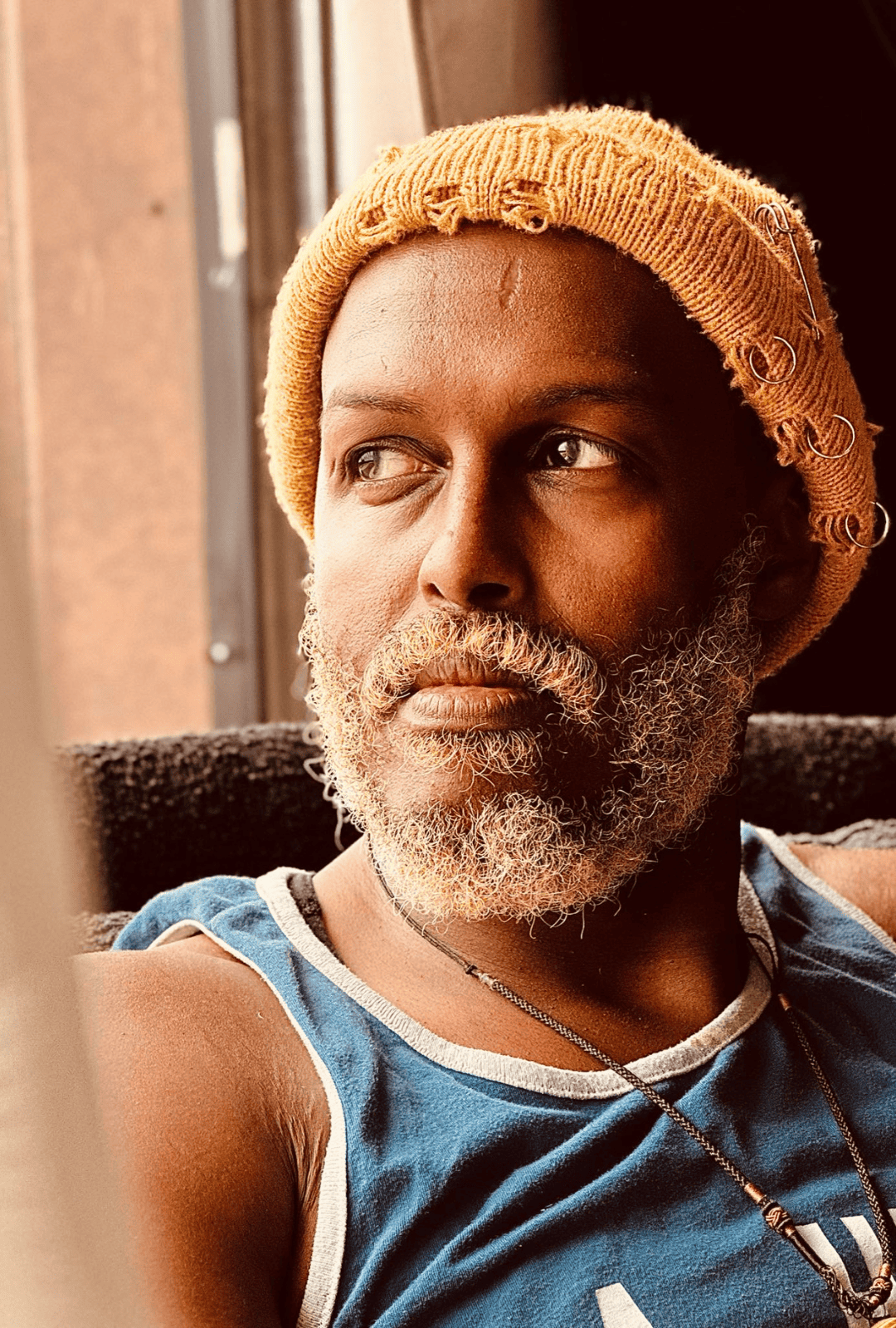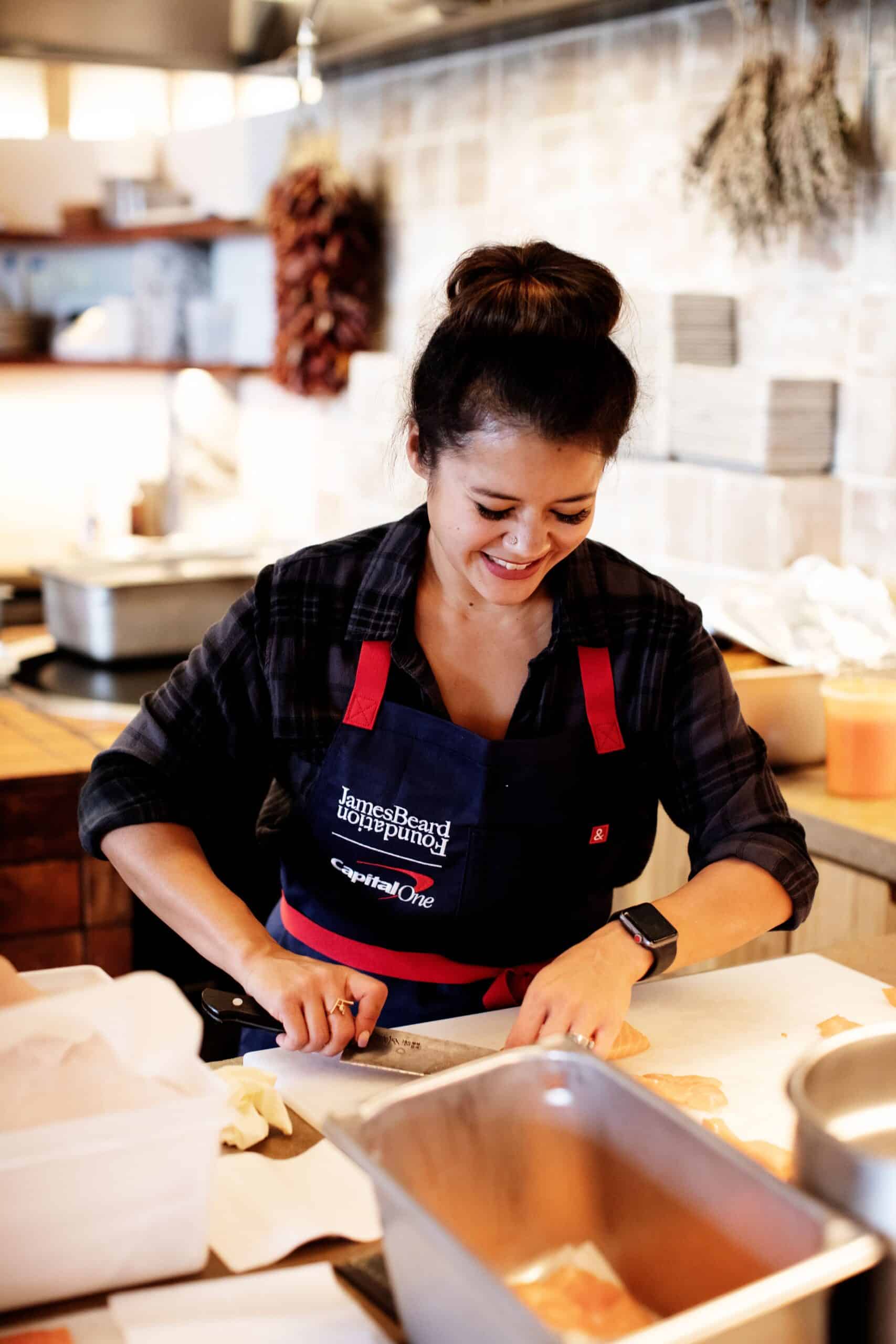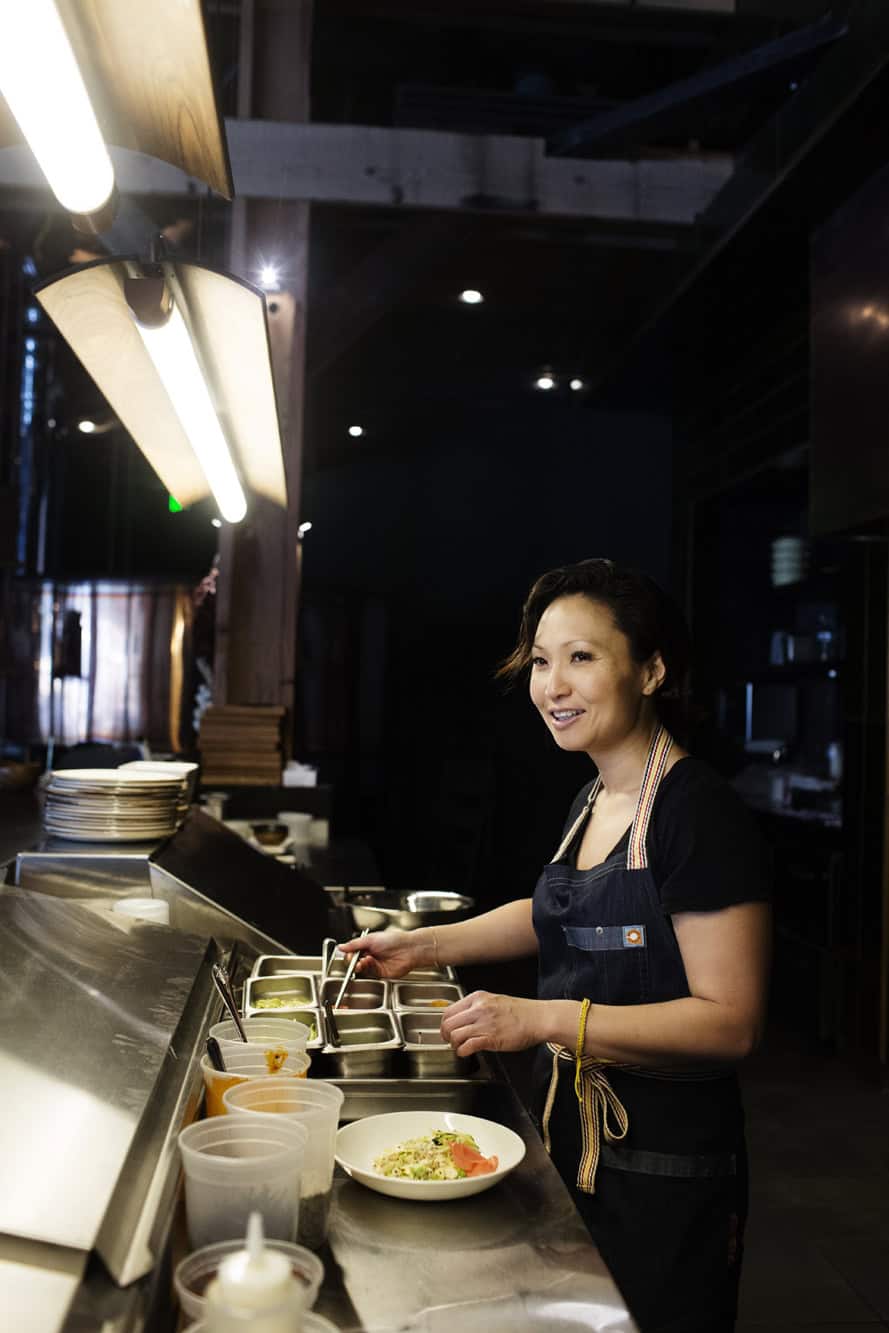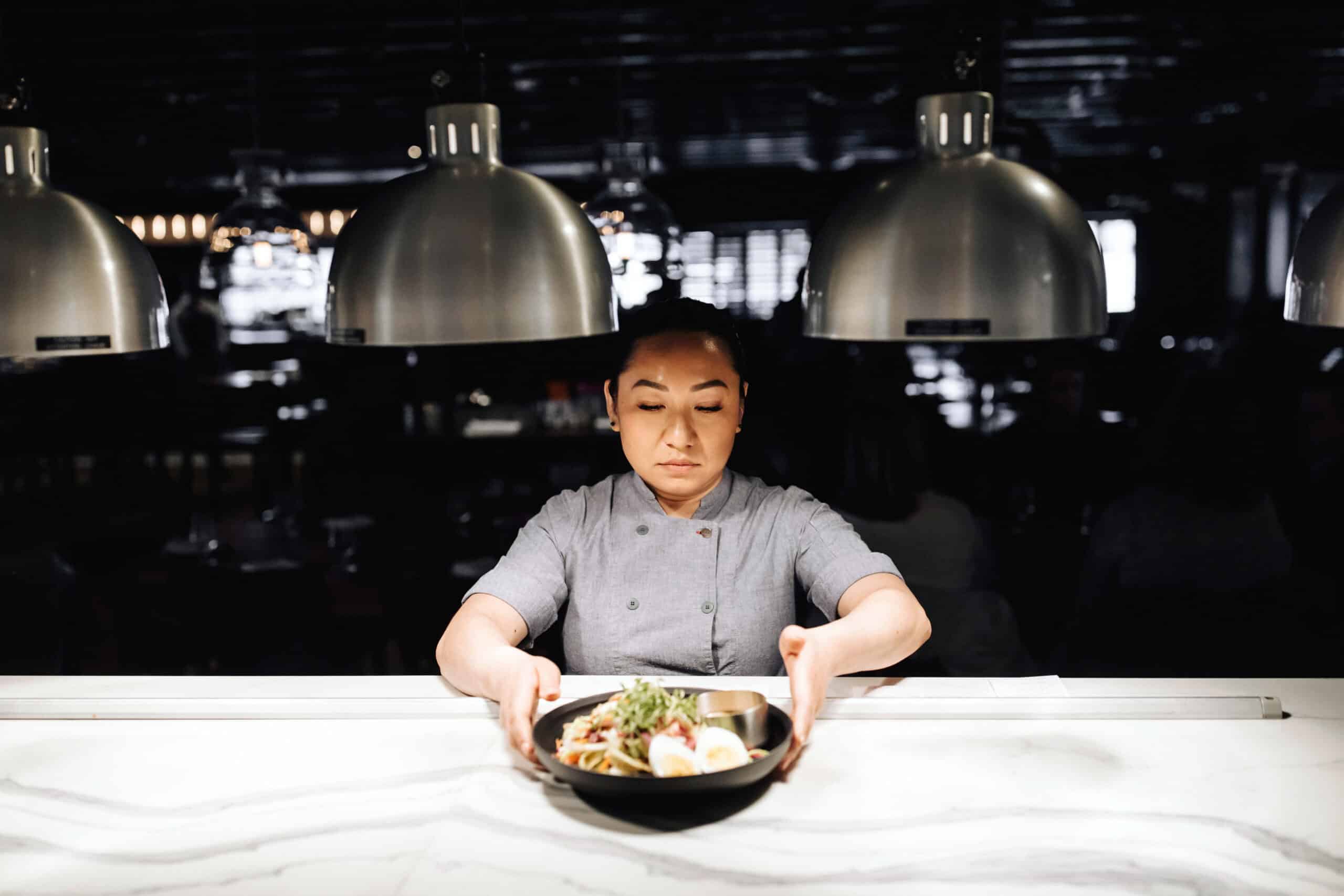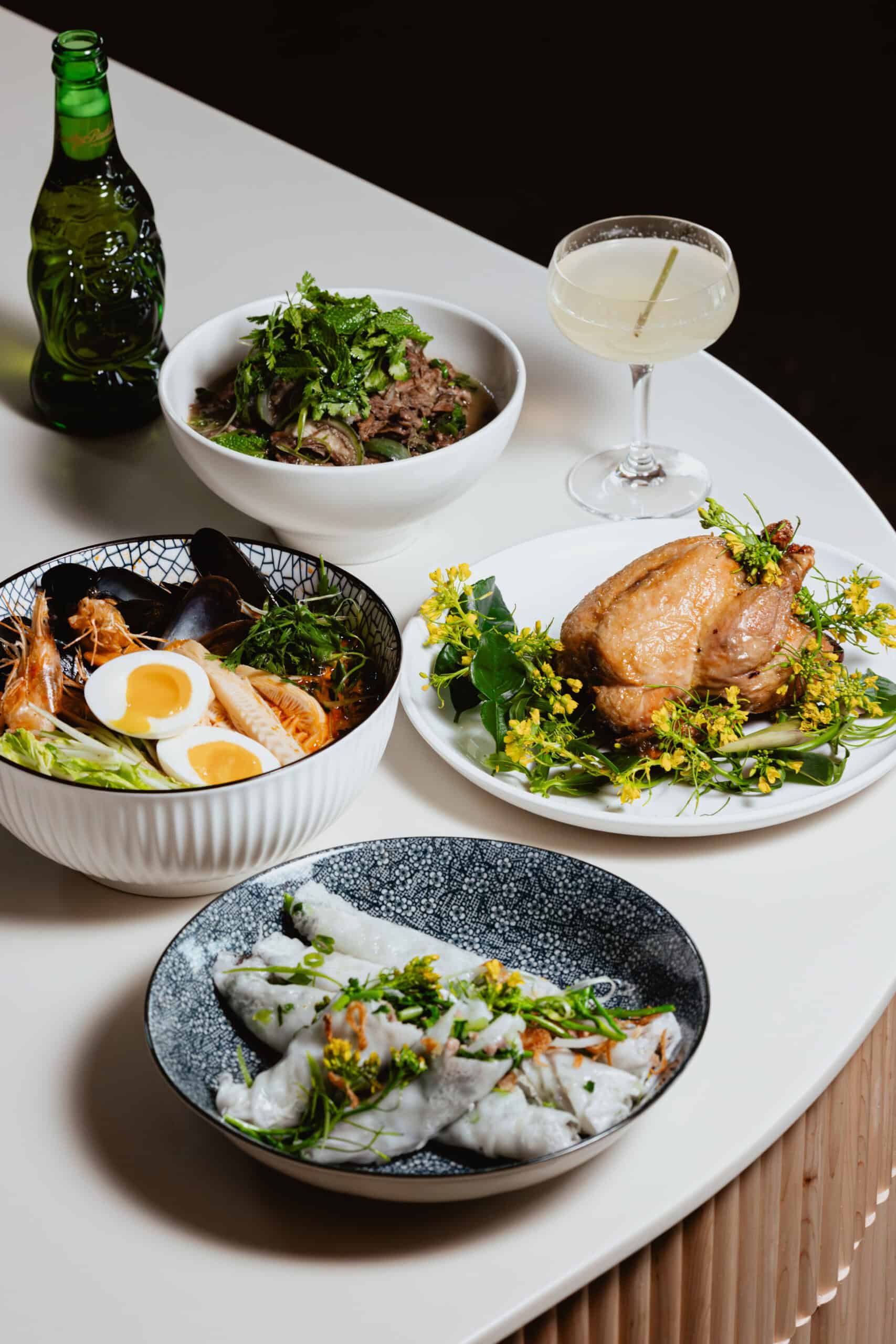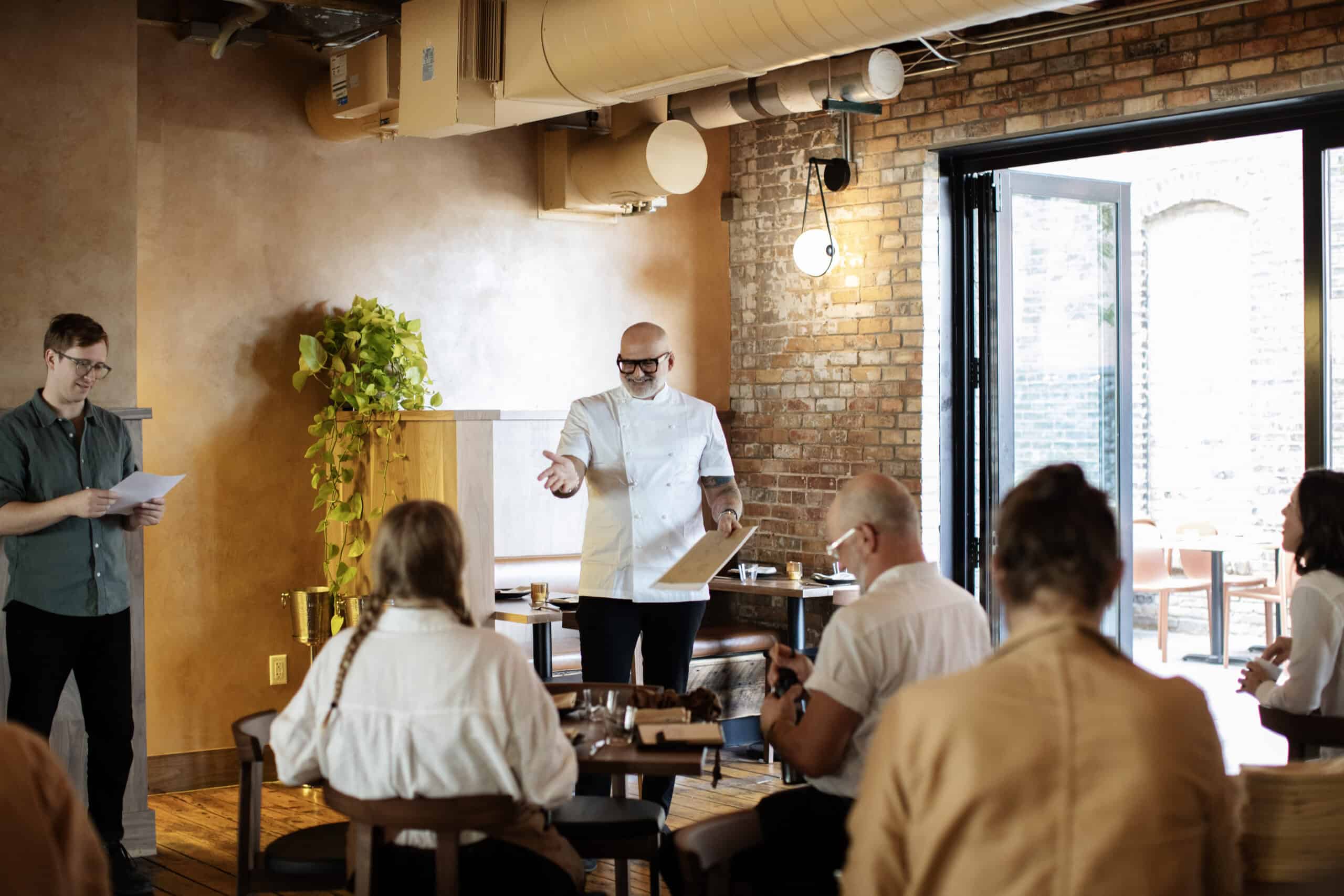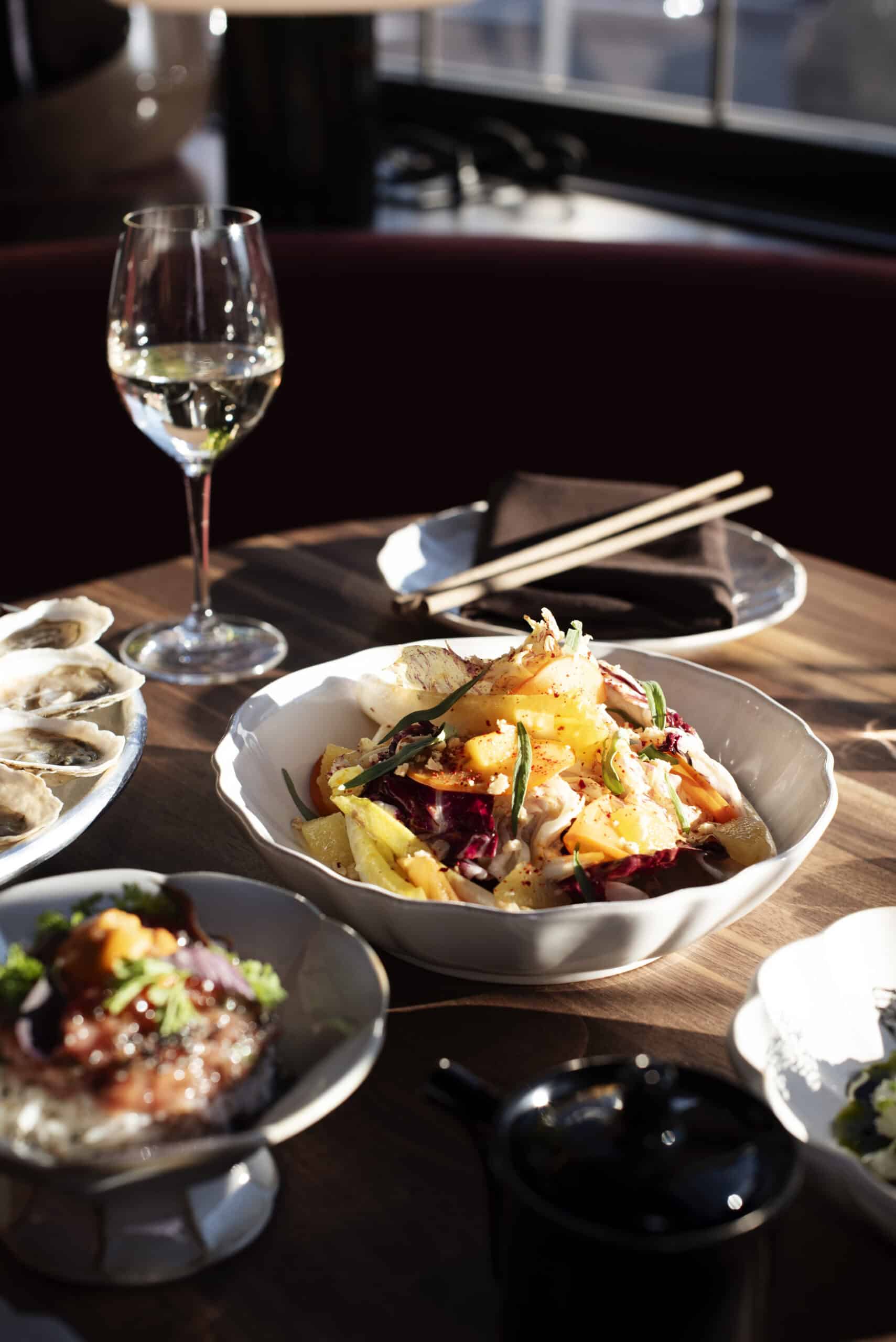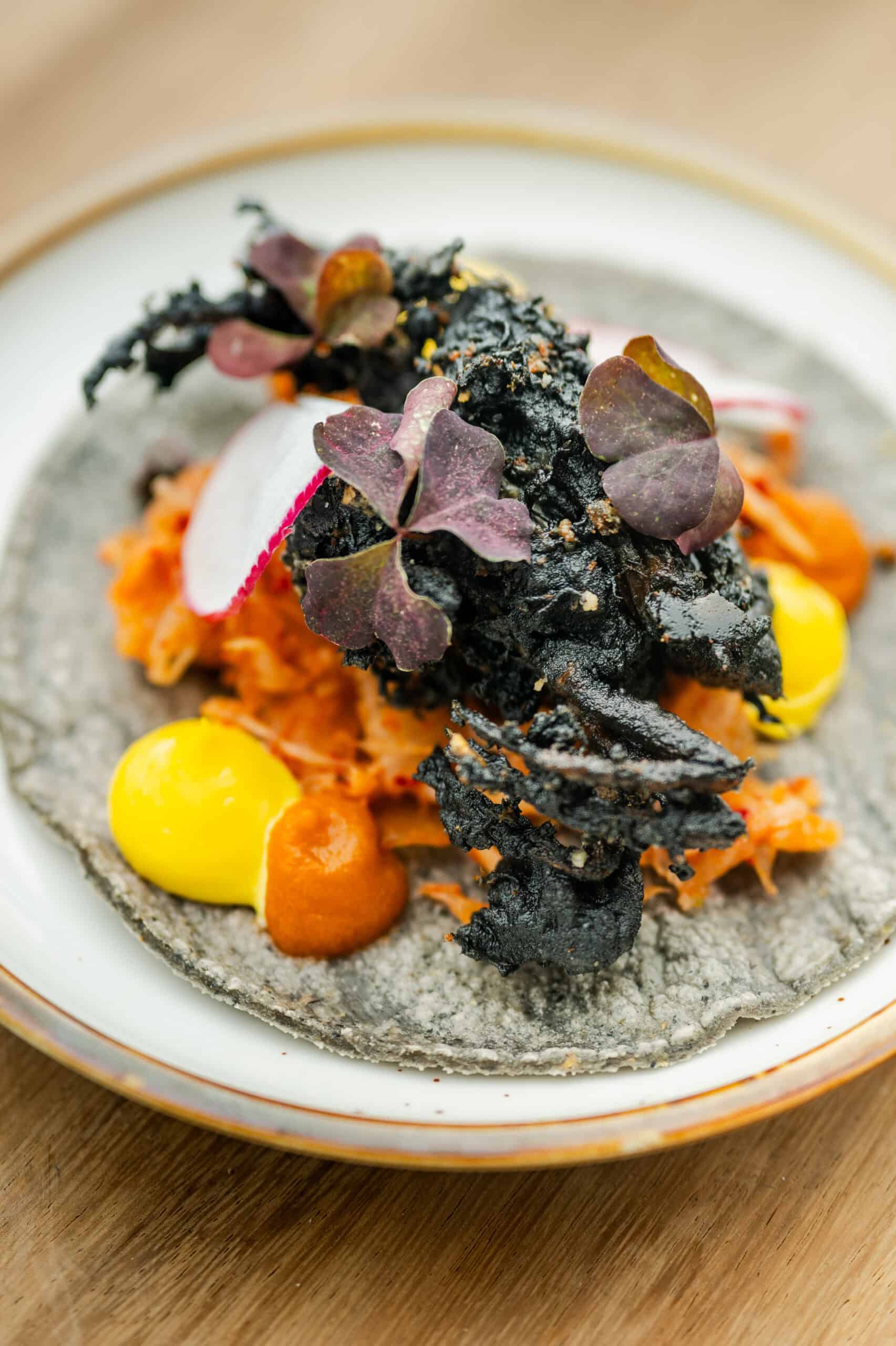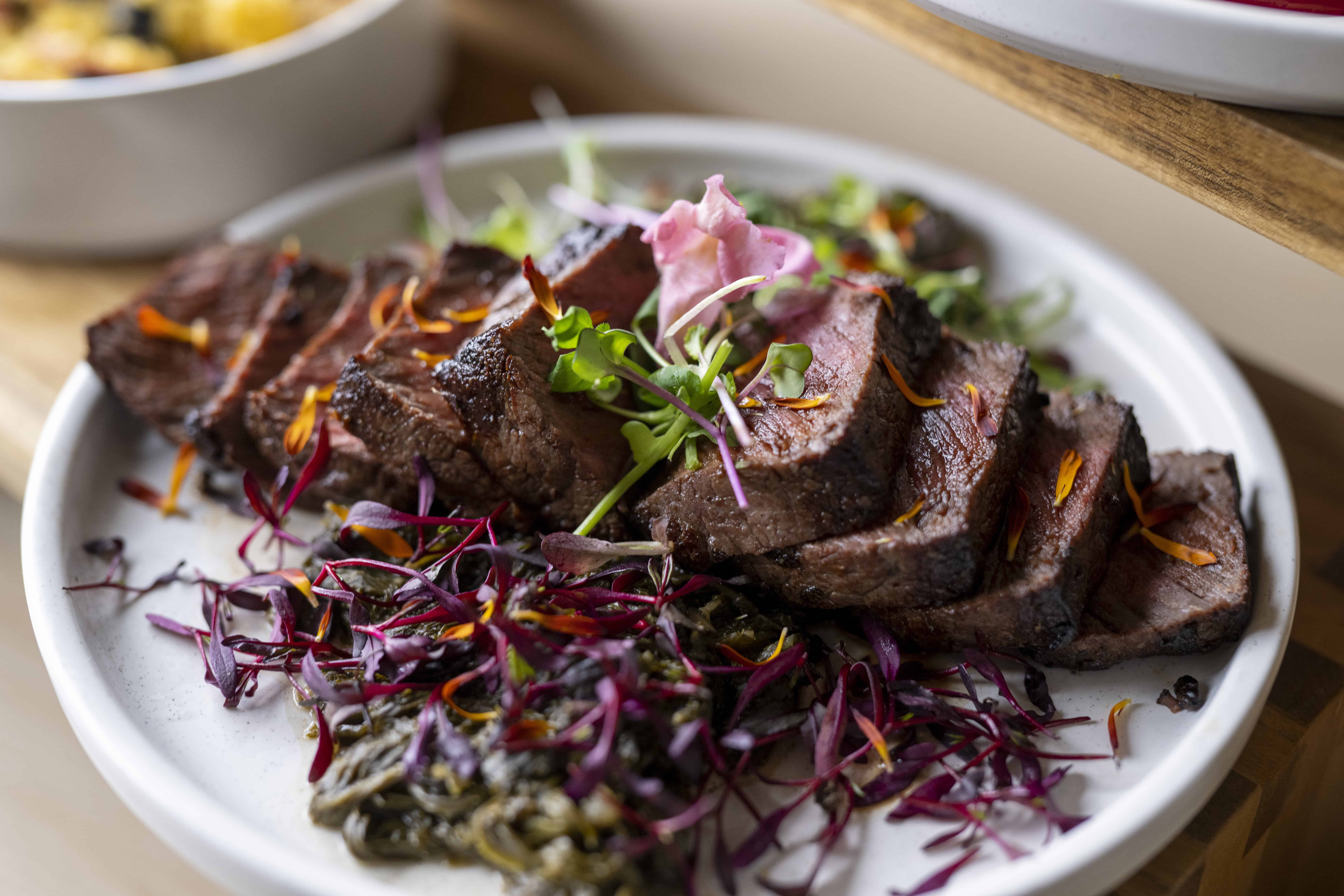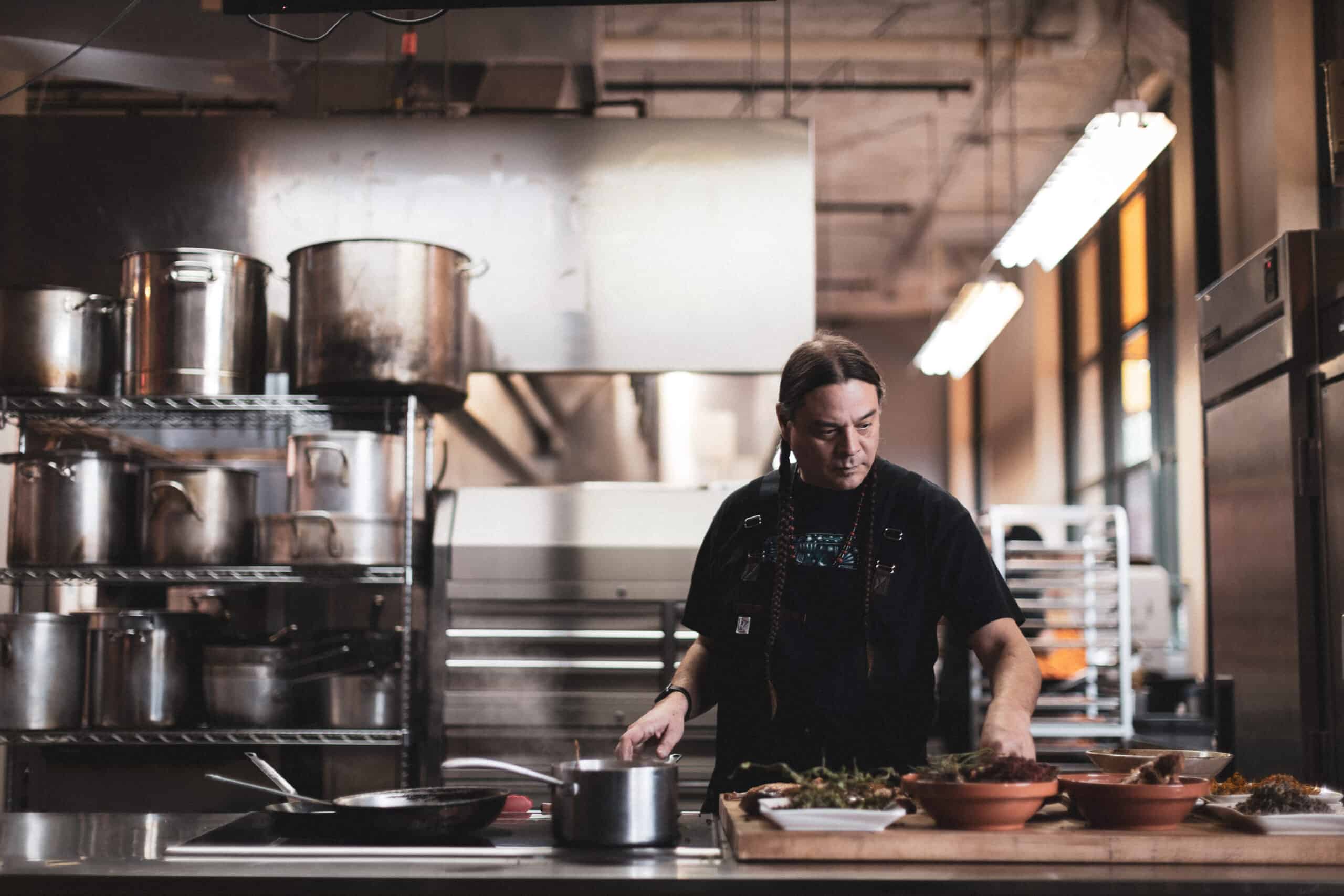Despite ample evidence to the contrary, outsiders still tend to think of the Twin Cities as flyover country — too cold for comfort, too inland to be interesting, too bland to be beguiling. Of course, residents know the reality: This warm, welcoming place has long embraced immigrant and refugee communities, making for a multicultural Midwestern melting pot. Where that beautiful diversity is most apparent and most approachable is in our richly flavorful food scene, which has exploded in recent years.
Before we dive into the complexities of Minnesota cuisine, let’s address the elephant in the (dining) room. Yes, there’s definitely some truth to those lefse and lutefisk stereotypes; after all, our state has strong Nordic influences dating back to early European settlement. But like most preconceived notions, those presumptions don’t tell the full story.
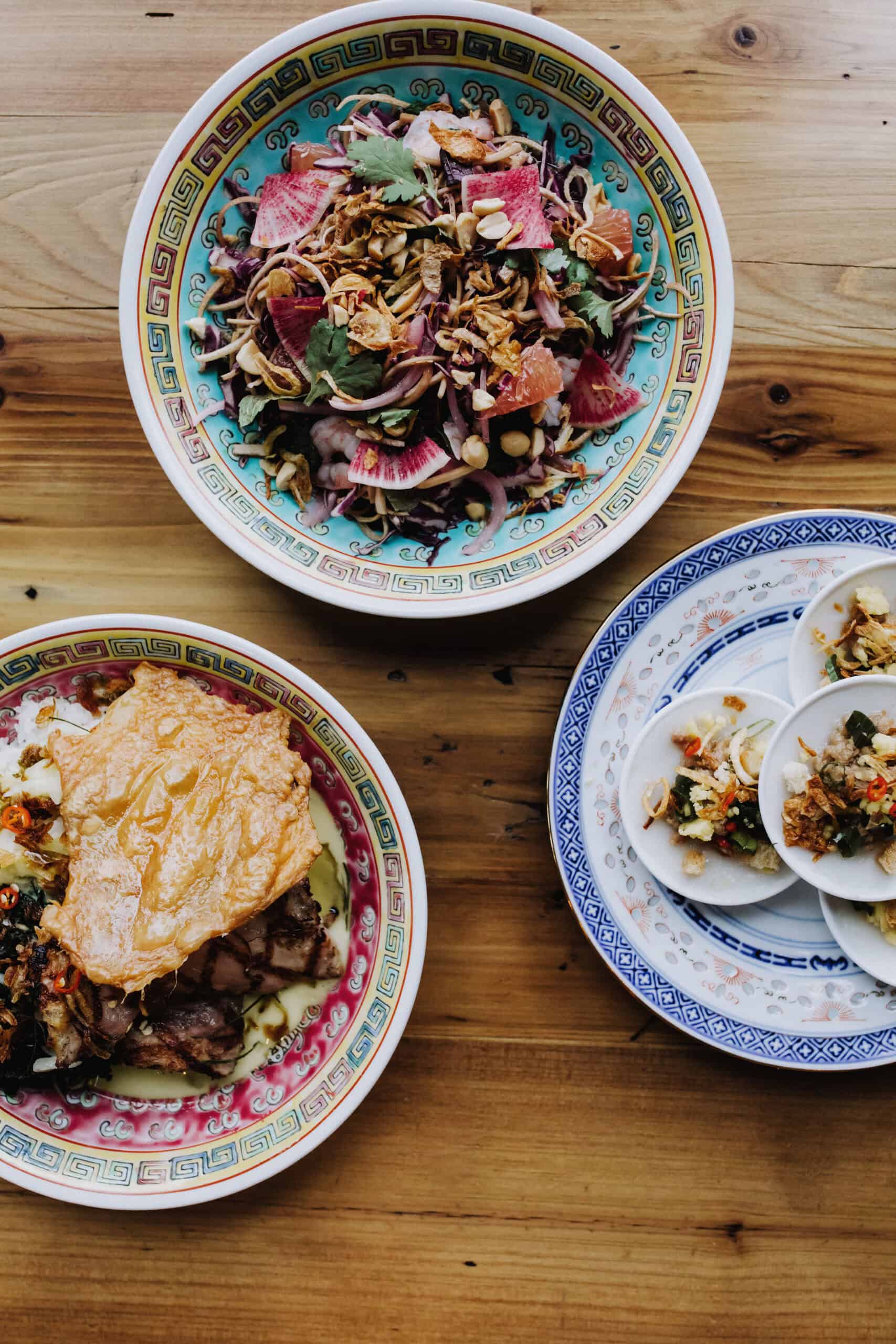
Photography by Matt Lien
Simply put, Twin Cities food isn’t just 50 shades of beige. Alongside those Scandinavian staples are international delights like masa from Mexico, kimchi from Korea, laab from Laos, suqaar from Somalia, housemade Hmong sausage, Argentinian-style steaks and so much more. That’s not to mention all the delectable dishes crafted from Indigenous ingredients that, like this place’s original peoples, have been here for centuries.
This is about so much more than just mouthwatering food, though there’s plenty of that to be had. It’s about honoring heritage. It’s about celebrating culture. It’s about storytelling on the plate. And it’s about inviting in others to create greater empathy and understanding.
But you don’t just have to take our word for it. Although we’ve had the great pleasure of eating our way through most of the restaurants around town, it’s the acclaimed chefs behind our deliciously diverse restaurant scene who can best explain how the Twin Cities became an unexpected haven for global cuisine. Here, in their own words, nine local food luminaries give their take on what makes the Land of 10,000 Lakes so standout.
We Minnesotans often find ourselves having to set the record straight when it comes to misperceptions about our home. How the Twin Cities’ most prominent chefs describe this midsize metropolis to out-of-towners — warm — might seem counterintuitive given the state’s climate.
“The best way to describe the Twin Cities to people who haven’t been here is that it’s a warm, comforting place,” says renowned Hmong-American chef Yia Vang, who last year opened his magnum opus, Vinai. “I purposely use that word ‘warm,’ because the weather might be cold, but people’s hearts are warm. We have this welcoming hospitality going on.”
Making its debut after years of anticipation, Vinai was one of 2024’s most celebrated restaurant openings not just in the Twin Cities but in America. Accolades steadily rolled in from the likes of The New York Times and Esquire, and Racket MN aptly dubbed it “the year of Yia.” Vang opted to name the Minneapolis eatery after the Thai refugee camp where he was born. He says it’s a love letter to his parents, who immigrated to the United States in 1988 in hopes of giving him and his siblings greater opportunities.
At Vinai, Vang is sharing his people’s culture in the best way he knows how — through comforting, heartfelt dishes that feel like home even for the unfamiliar, such as the popular braised beef rib, shrimp and pork toast and crabby fried rice. All that fare is made even more flavorful thanks to accompanying fresh produce and housemade hot sauces, such as the must-try Mama Vang variety.
Chef Jamal Hashi, whose family immigrated from Somalia in 1993, echoes that emphasis on the Twin Cities’ warmth. “This is a place where innovation thrives, but there is also so much respect for tradition,” he says. “People here are so open, genuine and curious about different cultures. We have Somalis moving here from other parts of the country and even other parts of the world — not because of the weather, but because of how warm this community is.”
Speaking of innovation, Hashi introduced Midwesterners to his people’s cuisine with his camel-on-a-stick offering at the Minnesota State Fair back in 2010 — believed to be the first East African food served at the annual end-of-summer extravaganza. That playful take highlighted the fare his family had long been offering at their Safari Restaurant in downtown Minneapolis: roasted goat cutlet, jambo steak, chicken fantastic with Somali rice and other favorites.
Commemorating the eatery’s importance, a photo of that now-shuttered restaurant hangs in the Smithsonian National Museum of American History in Washington, D.C. Hashi has gone on to open more than a dozen restaurants, including a Harlem outpost of Safari Restaurant, the first Somali eatery in New York City that fittingly earned a New York Times shoutout as the Big Apple’s best African restaurant. Today, he is working to bring culturally relevant foods to area schools and other institutions.
Through their culinary creations, Hashi and Vang are not only sharing stories about their unique familial histories but also honoring the substantial Somali and Hmong populations in Minnesota, both the largest diasporas of their respective groups within the United States. The Twin Cities is also home to sizable Mexican, Indian, Ethiopian, Chinese, Vietnamese, Korean and Filipino communities. That multicultural makeup reflects the state’s long-held tradition of embracing immigrants.
Minnesota’s first peoples, the Dakota and Anishinaabe, began intermingling with European explorers and fur traders as early as the 1600s. Starting in the 1700s then surging in the mid-1800s, immigrants largely from Scandinavia and Western Europe flooded into the state. The Land of 10,000 Lakes received another wave of immigrants after the Vietnam War, when refugees from Southeast Asia arrived. Then, asylum seekers from East Africa made their way here in the 1990s to escape the political violence of their homelands. These migration swells over time have majorly reshaped the face of our community.
This open-arms embrace of diversity flies in the face of commonly held misconceptions about Minnesota, as Vietnamese-American chef Christina Nguyen points out. “I don’t buy the whole ‘Minnesota Nice’ thing — the idea that people here are super icy,” says the restaurateur behind Hai Hai and Hola Arepa. “Yes, we can be reserved, but we’re also kind and empathetic. This is actually a really progressive place, with a willingness to accept people and a genuine curiosity to learn about other cultures.”
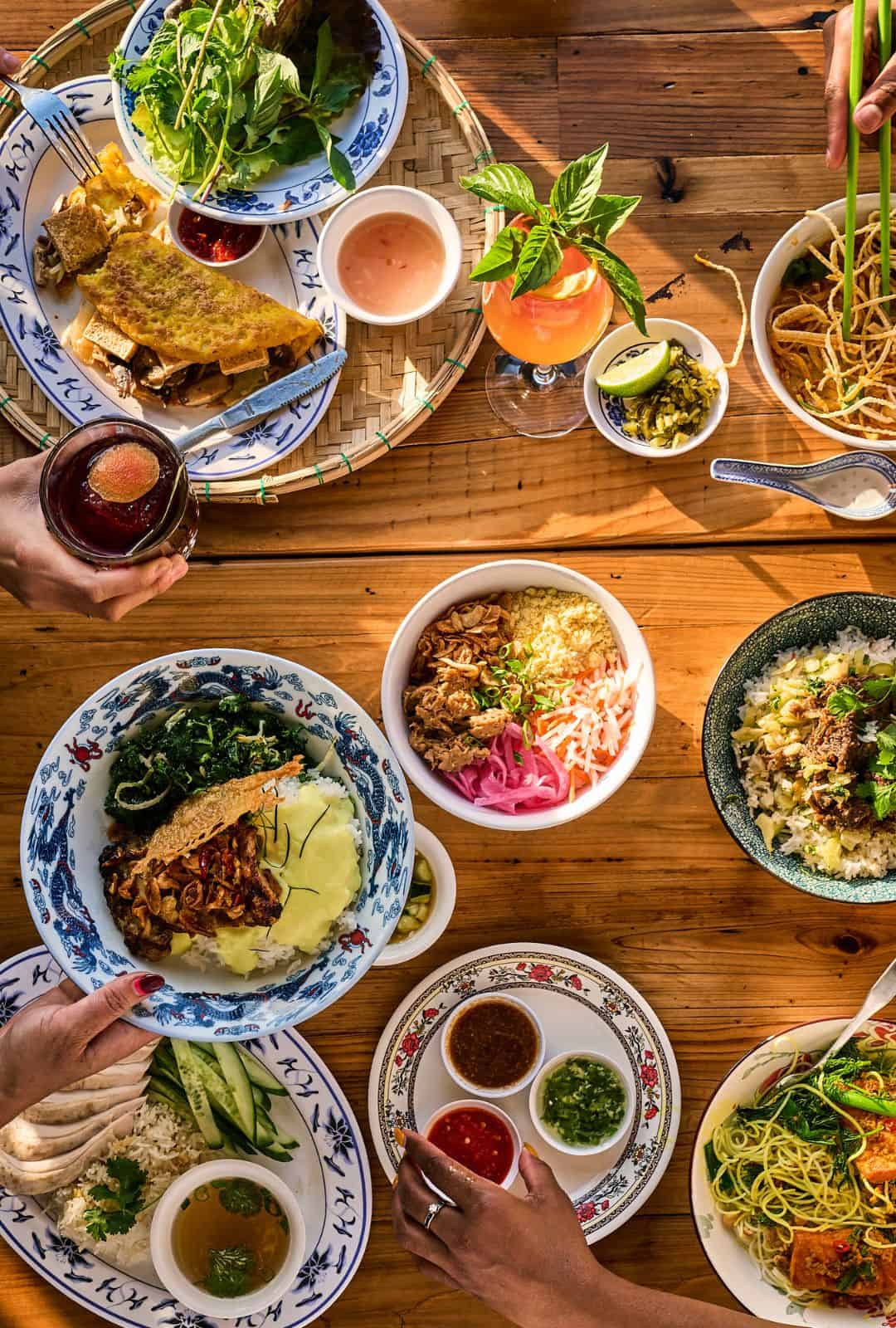
Photography by Tyson Crockett
She also thinks the cold that defines our region is something to be celebrated, not just tolerated. “Our winters are long and introspective, and people have a lot of time to work on creative endeavors during those cold months,” says Nguyen, who grew up in Minnesota, the daughter of immigrants. “We’ve got the four seasons, and we sometimes take for granted how beautiful spring, summer, fall and even winter are.”
Recognized for her flavorful fare like banana blossom cobb salad, Hanoi sticky rice and water fern cakes, Nguyen joined the Best Chef: Midwest club at last year’s James Beard Awards, which are considered the Oscars of the food world. Making the honor even sweeter was the fact that fellow Twin Citian Ann Kim, who earned the accolade back in 2019, presented the award to her. Kim, too, has opinions on the cold, borrowed from the late great Prince.
“I often think of Prince’s quote that it’s so cold in Minneapolis that it keeps the bad people out,” says the chef/owner of prominent pizzeria Young Joni. “He pretty much nailed that. I love it when people discover that the Twin Cities is such a hidden gem. It’s this inviting, affordable place where immigrants can set down roots and create a life for themselves.”
The Korean-American chef, whose family immigrated to the United States in 1977 sponsored by a Minnesotan uncle, didn’t set out to create a culinary revolution; rather, she shifted to the restaurant world for a change of pace from acting. But soon she realized she had an opportunity to acquaint diners with Korean staples such as kimchi and BBQ beef short rib — foods that during Kim’s childhood in a largely white suburb caused her great embarrassment — by presenting them in a “safe” way, atop pizzas.
“Pizza became the gateway to introduce people to new flavors and to prompt new conversations, which is a great place to start,” she says. “As I think about my culinary career after 15 years, I realize this is a way to honor my heritage, but that wasn’t really my initial goal. There’s also a lot of weight and pressure that comes with that, and sometimes there are unrealistic expectations and judgments that come with being the first person to do something differently.”
That’s a nuanced nod to the criticism Kim has faced over the years that her cuisine — which she very openly explains is intended to reflect her upbringing rather than somehow represent an entire ethnic group — isn’t authentic. It’s a common critique for BIPOC chefs, sometimes from within their own communities.
Ann Ahmed can relate. Despite receiving ongoing critical acclaim for the soul-warming fare served at fan-favorite spots Gai Noi, Khaluna and Lat14 — think laab seen, green papaya salad and panang spaghetti — the Lao-American chef has had major insecurities about the authenticity of her culinary creations for much of her career. In fact, it wasn’t until last year when she returned to her birth country of Laos, which she left at the age of two, that she finally overcame that sense of self-doubt. Even still, she sometimes feels she exists between two worlds — not quite Lao enough, not quite American enough.
“When I opened my first restaurant 20 years ago, I didn’t even call it Lao food because I was worried that no one would come,” she recalls. “Over time, I found my identity and my voice, which helped create that confidence within. I’ve always served bold flavors, but I didn’t have the bold personality to really put myself out there. I’ve come to realize that the more you can share your story, the more you can educate people.”
Staying true to yourself and showcasing your culture’s bold flavors can be especially tricky in a place known for its aversion to spiciness. But like many Minnesota misconceptions, that too seems to be more farce than fact. Hmong-American chef Diane Moua disproved that stereotype when she refused to alter her recipes to appeal to the assumed unadventurous Midwestern palate upon opening Diane’s Place last year.
“In the beginning, even our servers were telling me we couldn’t serve the Hmong hot sauce because it was so spicy that people might choke,” she says with a laugh. “I refused to dumb it down because if you go to any Hmong gathering, this is the hot sauce you’ll have at everyone’s house. But I did make a sweet and sour sauce that’s not as spicy for people who can’t do the hot sauce. We go through way more Hmong hot sauce than sweet and sour, which makes me so happy.”
Before striking out on her own, Moua spent many years working as a pastry chef, most recently at Gavin Kaysen’s celebrated eateries, including Spoon and Stable, Bellecour and Demi. The two-time James Beard winner and Minnesota native cheered on his former colleague when she decided to open her own restaurant honoring her heritage and her refugee parents, who raised her on a Central Wisconsin farm. (Her beloved pastries are still on the menu at Diane’s Place, alongside delectable dishes like Hmong pulled pork, beef laab carpaccio and sticky fried rice.)
That kind of community support is crucial given the many obstacles restaurateurs face — let alone restaurateurs from marginalized groups that have experienced historical injustices. Layered onto that are ongoing divides and inequities, as evidenced by the racial reckoning that spiraled out from Minneapolis five years ago after George Floyd’s killing. Among the many hurdles BIPOC entrepreneurs encounter is difficulty securing funding; just ask Vang, who spent years trying to make Vinai happen. Those financial limitations often mean their restaurants aren’t located in buzzy neighborhoods with expensive real estate, Ahmed explains, requiring customers to specifically seek out those dining experiences. Other challenges abound, like diners’ attitudes about the price of certain cuisines and their tendency to box chefs into what they can and can’t do.
Having built a bona fide culinary empire here, Argentinian chef Daniel del Prado has recently turned his attention to uplifting others. One of the Twin Cities’ most prolific restaurateurs with nearly 10 eateries to his name — among them Martina, Colita and his most personal, Argentinian steakhouse Porzana — he is partnering with former employees to bring their culinary dreams to life. Case in point: Über-cool East Asian eatery Minari is a collaboration with Jeff Watson, executive chef and culinary director for del Prado’s restaurant group, to honor his Korean heritage. And elevated Edina sports bar Dexter’s is a partnership with a former server, Carla Jones.
Born in Buenos Aires, del Prado moved to the United States in his early twenties to pursue a culinary career. He made his way to the Twin Cities in 2005, working at esteemed eateries like La Belle Vie and Solera then opening Bar La Grassa with his mentor, Isaac Becker. He ventured off to other parts of the country but returned in 2012 to help Becker open Burch. That was all before del Prado started a string of eateries honoring his Spanish and Southern Italian ancestry. These days, he’s focused on passing the baton to the next generation.
“My next chapter is helping other chefs open up their own restaurants,” he says. “I started from zero, and I did everything through hard work and learning as much as I could. Now, I want to share my resources and my know-how with the people who helped get me where I am today. This gives me another boost of energy to keep doing this because this can be a hard industry. I’m actually very excited about this next stage for my company, and I hope that’s the legacy I have here in the Twin Cities.”
Minari is in good company in Northeast Minneapolis, which has become a multicultural hot spot, with Vinai, Diane’s Place, Young Joni and Hai Hai all nearby. In fact, Moua and Vang have been asked if there’s friendly competition between the two of them since their eateries are just down the street from each other. But just as no two lived experiences are the same, their takes on Hmong food are uniquely theirs.
Also in the neighborhood is Oro by Nixta, Mexican chef Gustavo Romero’s mission-driven restaurant centered around a single objective: to preserve heirloom Mesoamerican corn varieties, which have long been at risk due to colonialism, politics and international trade. Much to Twin Cities foodies’ delight, that purposeful pursuit yields delicious benefits in the form of tacos, tamales, molote and more.
Although Minneapolis is a far cry from Gustavo’s homeland in the east-central state of Hidalgo, he thinks the two places share some key characteristics. “One of the biggest similarities I see is how resilient and proud people are,” he says. “In my hometown, we believe we have the best of everything. Even with our flaws, we’re still very proud. That’s something Minnesotans also have. They know we have shitty weather here, but they still claim to be the best state in the country.”
At 17, Romero crossed the border into the United States and began working in restaurants in Arizona, California and Florida and even spent a short stint in Italy. He cut his teeth cooking other cuisines but often wondered why there weren’t any Mexican restaurants that served food the way he knew it back home. He moved to Minnesota in 2014 and eventually saw an opportunity to introduce Midwesterners to authentic Mexican food, no matter the distance from the Mexican border. In 2020, he and his wife opened a tortilleria that totally transformed Minnesotans’ understanding of what makes a good tortilla. Then in 2023, they debuted the lauded Oro by Nixta, where they offer a masa master class of sorts.
“Entire civilizations have survived on this crop,” says Romero, who officially became a United States citizen last August. “But the more I started talking to people here about corn, the more I realized there was a lack of understanding about our people and our food. I think one of the easiest ways to understand people is to look at what they eat and what they’ve had to do to survive throughout history.”
Romero’s ambitions are closely aligned with that of Oglala Lakota chef Sean Sherman, who is on a mission to revitalize Native American foodways in Minnesota and beyond. That comes to life at his renowned Minneapolis restaurant Owamni — which serves decolonized fare devoid of Eurocentric ingredients like beef, pork, chicken, dairy, wheat flour and cane sugar — as well as at his NATIFS nonprofit and its Indigenous Food Lab incubator kitchen. The latter is situated in South Minneapolis’s Midtown Global Market, another destination for global fare.
The TIME 100 honoree grew up eating government commodity foods on South Dakota’s Pine Ridge Reservation, one of the poorest communities in America. Like Romero, Sherman spent much of his early career cooking European cuisines, which highlighted how little he knew about his own people’s food. That epiphany set him on a path to amplify Native knowledge via the medium he knows best: food. At Owamni, that takes shape as simple yet sophisticated dishes like Three Sisters, a stew made with corn, beans and squash; smoked elk rack with pumpkin carrot purée; and fan-favorite roasted sweet potatoes with maple-chili crisp.
As much as the Twin Cities’ multicultural fabric is made up of those who have come here, it’s also about those who have always been here. “When we look at United States history, Indigenous peoples have largely been left out of the discussion,” says Sherman, who moved to Minnesota in his early twenties. “Our cultures, languages and knowledge are relatively unknown. I feel hugely honored to be able to help open up people’s minds to the immense diversity of our Indigenous cultures and to help people recognize all of the Indigenous food that sits right here in America.”
For Sherman and his Twin Cities counterparts, food is about so much more than just nutrition. It’s also a means of preservation, education, celebration and connection — something we’re dearly in need of these days. Though their missions and motivations certainly vary, these local thought leaders are united by their powerful ability to use food to effect meaningful change.
Ultimately, it all comes back to community — much like that warm embrace that the Twin Cities has historically shown immigrants, refugees and others who choose to call this place home.
“Here’s the secret behind Vinai that we don’t really tell people,” Vang says with his characteristic smirk. “We’re here to build community, and good food just happens to be the byproduct of that. People come here because they want to be a part of the community and they want to sit at the table, even if the food is a little outside their comfort zone. Then slowly as they feel comfortable and let their walls come down, they start seeing and smelling all the delicious food around them, and they want to try it. Understanding literally starts one bite at a time.”

